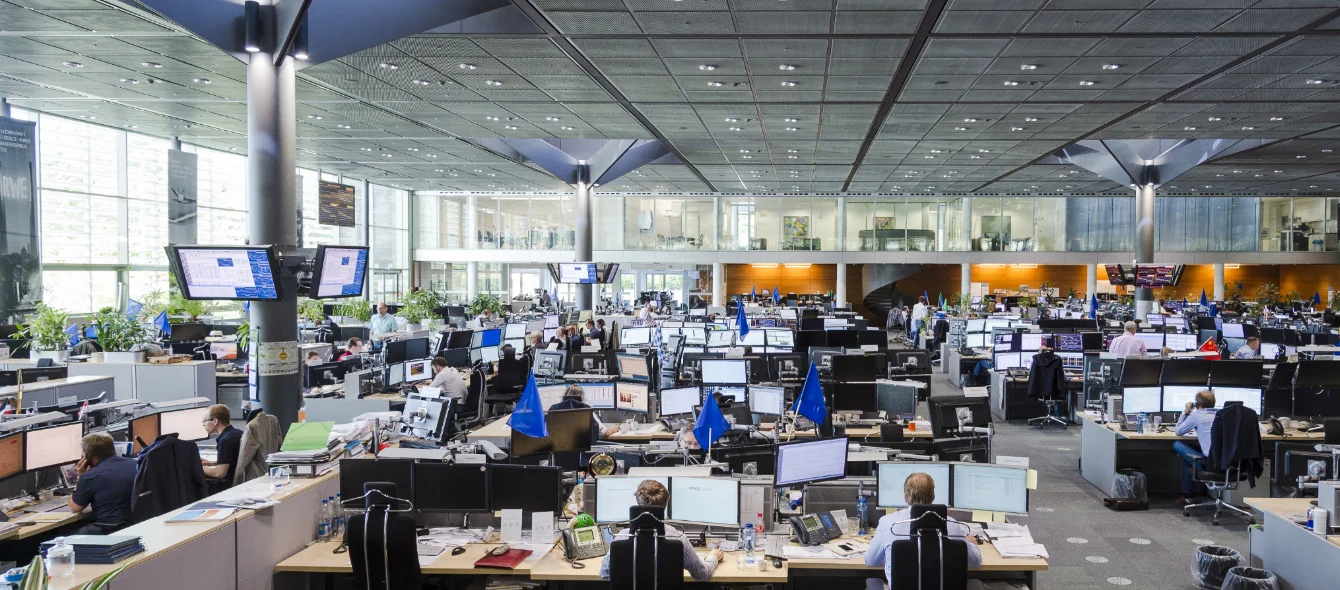The European emissions trading (EU-ETS) is making headlines. The price of CO2 allowances in the EU ETS rose to more than 34 € per ton of CO2 at the beginning of the year, and in mid-February it even scratched the €40 mark. When considering the trajectory of emissions trading prices since the scheme started in 2005, this means allowances have almost quadrupled in price over the last three years and are now at a very high level.
Prof. Dr. Manuel Frondel will be able to give a detailed explanation as to what sparked this development. As Professor of Energy Economics and Applied Econometrics at the Ruhr University Bochum (RUB) and Head of the Competence Area ‘Environment and Resources’ at RWI – Leibniz Institute for Economic Research, his work has been dedicated to emissions trading systems for many years now.
Professor Dr. Frondel, is this an all-time high we’re seeing at the minute?
This is indeed the highest that allowance prices have been since emissions trading was introduced in 2005. But it won’t stay the all-time high for long: as the global economy improves significantly in the aftermath of the coronavirus pandemic, the price is likely to rise even further – particularly if the European Union and its member states take their climate targets seriously.
Do you find this development surprising?
No. This is mainly the result of the EU’s stricter climate targets: by 2030, greenhouse gas emissions in the European Union are now to be reduced by 55% compared to 1990, rather than by 40%. I, like many of my colleagues, consider this to be extremely ambitious. After all, the 40% target was already going to be a challenge.
For some time now, this development has clearly been an upward trend. Since early-2018, certificate prices have gone from less than 10 euros per metric ton to more than triple that figure. What sparked this trajectory?
This is clearly the consequence of regulatory changes to EU emissions trading aimed at reducing the large number of surplus allowances, which have been building up for some years now. The market stability reserve, introduced in 2019 and to which surplus certificates are temporarily transferred for a period of time, has contributed to this shift. In some cases, these allowances are actually permanently deleted when a certain threshold for the number of transferred allowances is exceeded.
Looking back: which measures have proven effective?
The market stability reserve has certainly played a big part in increasing prices, but repeated assertions by politicians that they are getting serious about climate protection and, above all, the stricter EU emissions target have undoubtedly also had an impact.
According to critical observers, flaws in the design of the European Emissions Trading Scheme mean the surplus of emissions allowances has effectively prevented proper management of emissions. Was this criticism justified? And can we now say that the EU ETS has overcome its ‘teething problems’?
There was undoubtedly a considerable surplus of pollution permits, which was, in part, due to design flaws. However it was also partly due to the poor economic situation after the financial crisis in 2008. In this instance, low allowance prices helped dilute the economic fallout of the crisis without jeopardising the positive impact that emissions trading has on reducing emissions. That being said, once these teething problems have been ironed out and now that climate targets have become stricter, a continued surplus of allowances will be unlikely – even despite the economic consequences of the coronavirus pandemic.
In your opinion, how integral is European emissions trading to Europe achieving its climate targets? How successful has the EU ETS been thus far?
This climate policy instrument has proven highly successful. While the EU has reduced its overall emissions by around 25% since 2005, sectors participating in the EU ETS have managed to reduce their emissions by 35%. This is largely thanks to the power generation sector. By way of comparison: emissions in the transport sector, which is not covered by emissions trading, have since stagnated.
How should European emissions trading be developed to support the EU in achieving its ambitious climate targets?
Emissions trading plays a leading role in emissions reduction in Europe, and this position should be further solidified by integrating other sectors such as transport and agriculture. However, all EU members will need to agree on this, which can take time. So, in the meantime, Germany should submit a request to allow its recently launched national emissions trading, which applies to transport and buildings, to be integrated into the EU emissions trading scheme. This would have the particular advantage that the 2030 emissions target in non-ETS sectors of achieving a net reduction in greenhouse gas emissions versus 1990 of at least 38% would no longer apply to Germany. This target is binding under EU law and would result in billions of euros in annual fees in the event of non-compliance – which is a highly likely outcome.
Development of the EU ETS carbon market price
Source: Ember ClimatePhoto credit: © RWE

